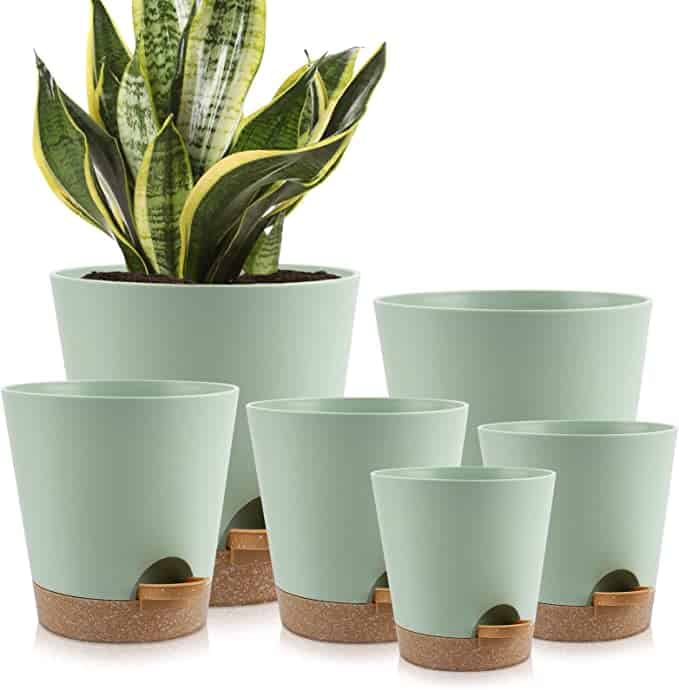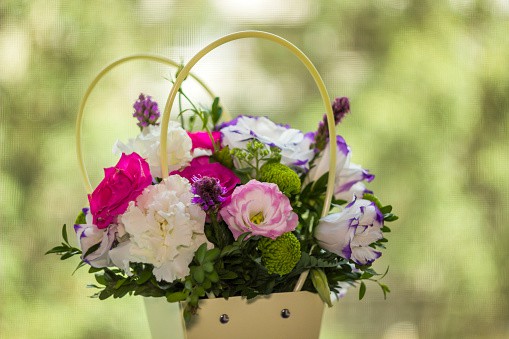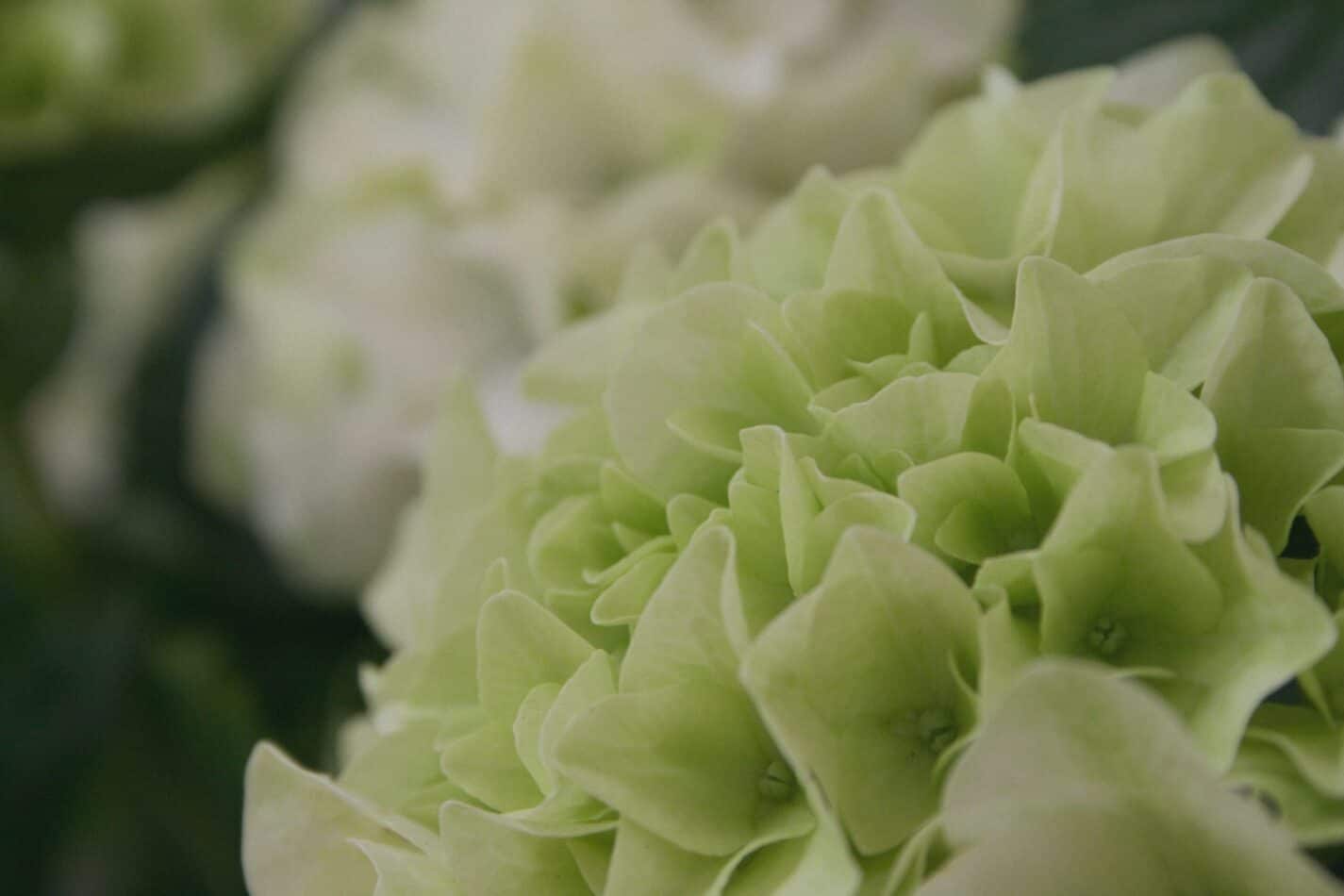The flower Lisianthus and Eustoma russellianum are members of the genus Eustoma, in the family Gentianaceae. The botanical name for this eye-catching beauty is Eustoma russellianum, and it is native to warmer climates like the southern US, Mexico, Caribbean, and northern South America. It is an herbaceous annual, so they germinate, flower, and die in one growing season.
This flower produces stunningly showy funnel-shaped flowers on strong, straight stems. It belongs to a small genus and is usually found in grasslands. There are many cultivated varieties and cultivars available in garden centers, although they can be tricky to grow, making them desired cut flowers, especially in the high-end floral industry. It comes in a host of colors, including shades of pink, purple, white, and blue.

Buy this pots set on Amazon>>
How to Plant
Lisianthus and Eustoma russellianum can be sown directly in the ground in early to midsummer and should be watered liberally on a regular basis. To ensure success in growing Lisianthus and Eustoma, please follow the following tips:
Light
Most varieties of Lisianthus and Eustoma russellianum prefer full sun, although some will thrive in partial shade.
Soil
The best soil for growing Lisianthus and Eustoma russellianum is well-drained, organically enriched soil with a pH of 6-7.
Water
Regular watering is essential for robust growth and prolific blooming. Make sure to keep the soil lightly moist, but not soggy.
Temperature
Ideal temperatures for growing Lisianthus and Eustoma russellianum are 65-75°F (18-24°C).
Humidity
Relative humidity should be kept as high as possible to ensure proper growth.
Fertilizer
Fertilize every two to four weeks with a balanced water-soluble fertilizer to promote strong growth and flower development.
Meaning & Symbolism
The word ‘Lisianthus’ has Greek roots and means ‘divine flower.’ This seashell-like blossom can symbolize many things, such as gratitude, appreciation, or beauty. It is a perfect way to show admiration for someone or to simply express your thoughts of admiration. This flower is also believed to embody the qualities of grace, genuineness, and politeness. In some circles, the Lisianthus can also represent everlasting bonds and everlasting beauty.
History, Mythology, and Religious Significance
The Lisianthus has a rich history and has been an important flower in various cultures throughout time. In Greek mythology, the Lisianthus was the flower of Aphrodite and associated with purity, as it was considered to bring luck and happiness into the house where it was presented.
The Romans were also fond of the flower and associated it with charm and love. In some regions of Europe, it has been a popular flower in local customs and legends. During the Victorian era in Europe, the Lisianthus was a popular flower among nobility and was often used to express love and gratitude.
The Lisianthus also has spiritual significance in the Christian religion, and is sometimes known as the ‘Flower of the Angels.’ It is believed that the flower is a symbol of hope and love, and is associated with Christ himself.

Buy this hydroponic indoor garden machine on Amazon>>
Flower Varieties and their Defining Characteristics
There are various cultivars available of Eustoma russellianum, each with their own unique beauty.
- The most common cultivar is the ‘Alaska’ series, which boasts large, frilly-petaled white blooms. It is a fast growing variety that blooms quickly, often in just 4-5 weeks after planting.
- The ‘Skyblue’ cultivar is another commonly grown variety and has double blossoms with blue petals and white centers. This variety is a slower grower, but it will display blooms from summer through late fall.
- The ‘Arturo,’ ‘Sapphire,’ and ‘White’ cultivars offer deep blue and white blooms, as well as a more compact growing habit. They are also excellent for borders and beds, as well as for use as cut flowers.
- The ‘Fuego’ cultivar has beautiful scarlet-red flowers and is ideal for adding a pop of vivid color to the garden.
How to Pot and Repot
Whether they are planted in the ground or in a container, Lisianthus and Eustoma russellianum should be potted in a soil-less, airy medium. Before potting, soak the root ball in tepid water for several hours. Fill a pot with the soil-less medium and find the right depth for planting the roots. The crown of the plant should be one to two inches below the surface of the soil. Add more soil around the root, tapping it down gently, then water to settle the soil and remove any air pockets.
If you are transplanting a Lisianthus and Eustoma russellianum from a container to a garden bed, make sure to do so in the evening or early morning on a cool day. Carefully dig out the pot, being sure to disturb the roots as little as possible. Dig a hole at least three times as wide and two inches deeper than the root ball, then fill the hole with water and let it drain. Place the root ball in the hole and fill it back up with soil. Gently firm the soil down with your hand and water the plant.
How to Prune
Lisianthus and Eustoma russellianum can be pruned in the spring when they are actively growing and in the late summer to early fall, when they are done blooming. To prune and shape the plants, carefully snip off the flower and stem with sharp shears. To deadhead, simply snip off any dead flowers with shears.
Keep in mind that pruning should only be done when they are actively in season and begin to lose form. Make sure to not cut too much, since removing more than 25% of the foliage in one session can reduce the flowers of the following season.
How to Propagate
Lisianthus and Eustoma russellianum can easily be propagated through a process called layering. Layering involves snipping off an existing stem and placing it in the soil, where it will take root and form a new plant.
To propagate, first remove a healthy stem from the plant and strip off a few of the lower leaves. Bend the stem to the ground, then make a shallow slit in the soil and bury the stem¾ of its length. Secure the stem in place with a U-shaped gardenpeg or divided rock. It is also a good idea to sprinkle a rooting hormone onto the stem prior to planting, as this will help promote root formation.
Keep the soil moist and in a few weeks, small rootlets should form around the stem. Cut the stem from the parent plant after the new plant has developed a few roots.
Common Pests & Diseases
Lisianthus and Eustoma russellianum share some common pests and diseases that can be damaging to their health and vigor. Fungal diseases, such as Phytophthora, grey mold (Botrytis), and Powdery Mildew, can all lead to a decrease in growth and flowering.
Insect pests such as aphids, mealybugs, and thrips can also be damaging. To control these pests, inspect the plant regularly and apply regular horticultural oil sprays or insecticidal soap.
Frequently Asked Questions
Q: How deep should I plant the root ball of Lisianthus and Eustoma russellianum?
A: When planting, try to keep the crown of the plant one to two inches below the surface of the soil.
Q: When is the best time to pot and transplant Lisianthus and Eustoma russellianum?
A: The best time to transplant Lisianthus and Eustoma russellianum is in the evening or early morning, when it is cool outside.
Q: How much should I prune Lisianthus and Eustoma russellianum?
A: When pruning Lisianthus and Eustoma russellianum, don’t remove more than 25% of the foliage in a single session. Pruning too much can result in a decrease in flowers the following season.
Fact Sheet
| Lisianthus & Eustoma russellianum | |
| Family | Gentianaceae |
| Plant Type | Annual |
| Mature Size | 12–24 inches |
| Sun Exposure | Full Sun to Partial Shade |
| Soil Type | Well-draining porous soil |
| Soil pH | 6.0–7.0 |
| Bloom Time | Summer through Fall |
| Flower Color | Pink, Purple, White, Blue |
| Hardiness Zones | 3-10 |
| Native Area | Northern and South America |
What we love from Amazon this week
Buy these wonderful flowers directly from Amazon:















